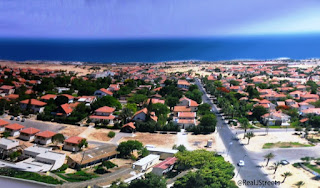GUSH KATIF - II

GUSH KATIF – II Gush Katif – 10 years old Since Gush Katif was planned as a strategic buffer between Israel and Egypt, people were given incentives to join and were offered a small house (not yet built) and a greenhouse. Ganei Tal , which Simcha (my first-born) and her husband, Gideon , decided to join, was the second moshav to be built there. Since the houses had not yet been built the other members, who were all married and lived elsewhere, had to leave their families in their homes at the beginning and lived together as bachelors in one building, in order to be able to start work in their greenhouses. Simcha and Gideon, who were newly-weds, started their married life living in an old caravan and turned it into a home - although Gideon was so tall that his feet stuck out of the “bedroom” window! Their next “home” was an old bus from the time of the British mandate which Gideon shlepped from the Tel-Aviv old